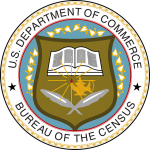 Article reprinted with permission from census.gov.
Article reprinted with permission from census.gov.
This story is part of an occasional series on the important community benefits that come from responding to the 2020 Census.
Whether you live in a metropolis or a tiny crossroads, in the suburbs or on a boat sailing from port to port, responding to the 2020 Census is critical for your community.
But a community isn’t always a geographic location, such as a town or a neighborhood. It’s not just where you are but who you are, too. Your “community” may be people who are like you or are doing things in life like you, no matter where they live physically.
Your “community” may be people who are like you or are doing things in life like you, no matter where they live physically.
For example, you can be part of the nationwide community of college students, not just college students at, say, the University of Louisville in Kentucky. Or you can be part of the community of parents who have children in elementary schools nationwide, not just at your child’s school.
Census responses are used to produce statistics about how many people live in what areas and who they are by age, sex, race and ethnicity. When those statistics are combined with other data, policymakers are better armed to make decisions about how to allocate billions of dollars in federal funds for critical public services such as hospitals, schools, road repairs and emergency response services for the next 10 years.
Scores of programs target specific communities of people like college students and young school children.
Here’s how the 2020 Census will help shape the future of specific communities of similar people no matter where they live across the country.
School Children and Their Parents
Knowing how many children live in a community will provide the foundation for important policy and planning decisions over the next 10 years.
For example, should a community build a new library? A new school? Should it expand Head Start for pre-K children?
That’s why it is so important to count everyone living in your home, including babies born on or before April 1, 2020, even if they’re still in the hospital at the time of the census but will live with you once they leave the hospital. Be sure to count children of relatives, friends or other people who live and sleep in your home most of the time.
Census results can affect funding for many programs aimed at school-age children. Among them:
- The National School Lunch Program, a U.S. Department of Agriculture program that funds free or reduced-price lunches for low-income students.
- Title 1 grants for local schools, a U.S. Department of Education program that helps schools with a high percentage of students from low-income households.
- Grants for state special education programs.
- The Head Start Program for low-income preschool children.
- Teacher training, such as the Department of Education’s Improving Teacher Quality State Grant available to schools across the country.
College Students and Their Parents
Several major programs informed by Census Bureau statistics help college students, including:
- Pell Grants.
- Aid for land grant and historically black colleges and universities.
- Federal grants for vocational training, funding provided to states in 2015 to improve vocational training in high schools, community colleges and technical centers.
Low-Income Individuals and Families
The Supplemental Nutrition Assistance Program (SNAP), formerly known as food stamps, is the second-largest federal program tied to census statistics. Other low-income programs contingent on census statistics include:
- Medical assistance under Title XIX, which is the largest federal program that uses census stats to inform funding.
- Child care, job preparation and other temporary assistance programs.
- Housing assistance.
People Age 65 and Older
The number of people age 65 and older in the United States grew rapidly over most of the 20th century, from 3.1 million in 1900 to 35 million in 2000.
In 2018, there were 52 million people age 65 and older, according to the Census Bureau’s population estimates. Their share of the population grew, too, from 12.4% in 2000 to 16.0% in 2018.
Programs that use Census Bureau statistics to help older people include home weatherization and grants for housing for low-income people over age 65.
Here is the link to the interactive map where you can see how many households in your city and county have responded to the 2020 Census.




